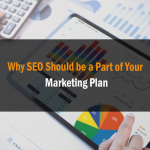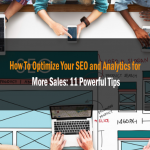
How User Experience Affects SEO: Everything You Need to Know
If you’re running a website, it’s important to make sure that you’re providing a good user experience (UX). After all, if your users don’t enjoy using your website, they won’t stick around for long. And if they don’t stick around, that means they won’t be engaging with your content or buying your products or services. This can have a negative impact on your SEO. In this blog post, we’ll discuss how UX affects SEO and what you need to do to ensure that your website provides a great user experience.
User experience is important for a number of reasons. For one, it can affect your bounce rate. If users come to your website and don’t like what they see or can’t find what they’re looking for, they’re likely to leave quickly. This sends a signal to Google that your website isn’t relevant or useful, which could hurt your ranking. In addition, if users have a bad experience on your website, they’re less likely to share it with others or link to it. This too could negatively impact your SEO.
So how can you ensure that your website provides a great user experience? There are a few things you need to keep in mind. First, make sure that your website is easy to navigate. Users should be able to find what they’re looking for without any trouble. Second, ensure that your website loads quickly. No one wants to wait around for a slow website to load. And third, make sure that your content is well-written and engaging. If it’s not, users are likely to click away quickly.
By following these tips, you can help ensure that your website provides a great user experience. And in turn, this can help improve your SEO. So if you’re looking to boost your ranking, make sure you focus on UX.
What exactly is UX?
UX, or User Experience, is a term that may be unfamiliar to those who do not reside in the world of web development and design on a daily basis. UX is an acronym for this term. It refers to how pleasant and easy it is for your users to use your website. The following are some of its most important features:
- Bounce rate is a metric that measures how many times users see your content before deciding to leave.
- Time spent scanning on each page.
A bounce rate is a measure of how many times visitors to a website go from one page to the next and then depart. This tells Google that they either visited your Home Page or a landing page but were unable to discover what they were searching for. When consumers look at websites, their patience is pretty limited. If your Home Page or landing pages do not provide them with adequate information, they will leave and search for another site elsewhere on the internet. A high SEO rating necessitates a low bounce rate.
The term “time on page” refers to how long the user spends on a website. It is an indication of their involvement. Obviously, if they spend a lot of time reading a page, it’s because it contains information that is relevant to them. To rank highly in search engine optimization, your site must have a lengthy page dwell time.
You can now learn how to improve your overall SEO score by influencing the two most important metrics that Google uses to evaluate your UX score.
Factors that Influence User Experience
The most important elements to consider when developing your UX in order to improve SEO are:
- The time it takes to load a website
- The URL structure is simple and user-friendly.
- Syncing and optimizing with your device
Let’s take a closer look at each of these;
1. Time to load
Users are not going to wait long for a website to load. They have other things to do and don’t have the time to wait for your website to get up and running. A few factors might contribute to the overall load time. Large pictures, in particular, are responsible for increased loading times. When it comes to luring visitors with appealing website design while also delivering sharp performance, less is more.
2. URL Structure that is Simple to Use
You should see a URL in your search bar at the top of the screen. A good URL structure is a simple-to-understand list that describes and classifies each page on a website. The structure is used by search engines to index websites. Using an easy-to-use URL framework that includes the website’s name, category they’re looking for, and then the specific page, not only does it benefit the search engine but also the user.
3. Synchronization and Optimization on Mobile Devices
If you do not have an app or a mobile website, you will struggle to rank highly in search engine results. Users are more likely than ever to look for businesses or ask questions on their phones. Your mobile site’s user interface must be simple, understandable, and load promptly.
You should trust the professionals.
Clearly, achieving a fantastic user experience for your website is a complex process. SEO Locale will help you ensure that your website is as high in the SERPs as possible.






